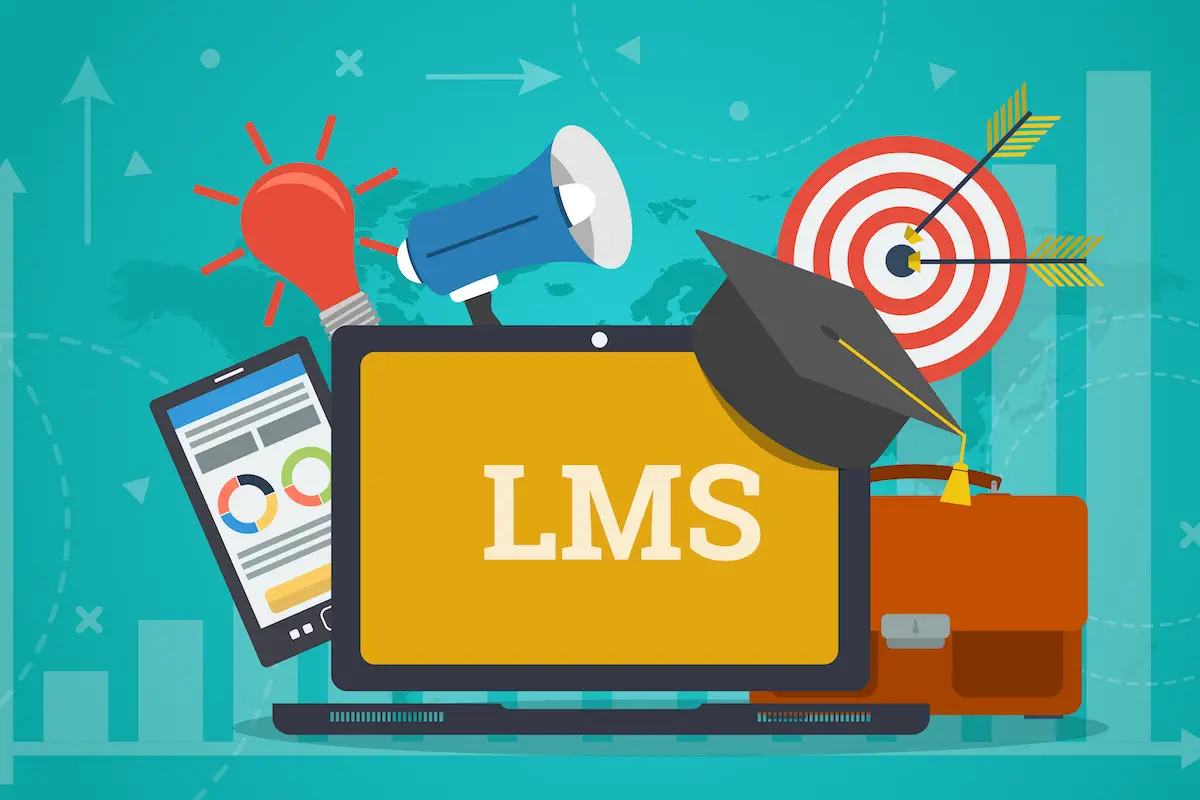Everything You Need to Know About LMS Integrations

Estimated reading time: 6 minutes
Table of contents
While researching various learning management systems or LMSs, you might have come across the term ‘integrations’. So, what is all the hype about?
Integrations are an excellent way to streamline your training process and help you make the most out of the software. With the requirement of little to no technical expertise and programming knowledge, LMS integrations are one of the best ways to make the most of your LMS.
Still got questions? Find out everything you need to know about LMS integrations in this article.
Why Do I Need LMS Integrations, Anyway?
Your organization may be working with multiple systems and applications to make your day-to-day operations easier. There may even be some specific systems or applications that your employees have already mastered. So, if they are relatively new to an LMS, integrations can help your employees become more confident with the system by bestowing them with the power of ‘familiarity’. Integrations can also help you create a web of essential systems so that none of them run as an ‘island system’ that is limited.
Some other benefits of LMS integrations are:
- Streamlined L&D operations
- Better team collaborations
- Reduced human discrepancies, errors, and redundancy
- More in-depth reports
- More seamless learning experience
Are There Any Challenges While Implementing Lms Integrations?
While opting for LMS integrations, it is important to consider the integration’s long-term viability. The viability of the integration has to do as much with the technical side of the integration as it has to do with the way it delivers content.
It is important to understand that the integration is supposed to elevate the way your LMS works. Thus, while choosing an integration, you have to be keen about the system or software you are going to integrate. For example, while doing an API integration, make sure you aren’t working with archaic software like SAP, Internet Explorer, and other batch downloads, which will only create redundancy.
LMSs are designed to deliver content and they will anyway do it. But if you choose to integrate other systems and tools with it, make sure that the integration is benefitting or it wouldn’t actually mean anything.
SEE ALSO: 9 Best Organization Apps Sure To Make Life Easier
How Do I Choose the Right LMS Integrations for My Organization?
There are many integrations to choose from but it is obvious that not all integrations are necessary for everyone. Especially when you are starting out on integrations, it is important to make the process gradual to not to overwhelm your in-house team. So, what’s the best way to choose the right integrations for your organization’s LMS that will benefit your daily operations and training programs the most? It is fairly simple. All you need to do is consider these factors:
- How do you plan to create, organize, and upload your training content?
- What kind of analytics data do you need and what are you trying to achieve with the analysis?
- Decide the number of users you will be adding, registering, and enrolling and if the users will be paying for the training courses they take.
Planning the integrations from the aspect of these three elements can help you outline the objectives and goals that you are trying to achieve with the integrations. This can especially help in deciding the right LMS for your organization.
The 6 Basic LMS Integrations That You Need to Know About
CMS (Content Management System)
CMS or Content Management Systems are one of the best ways to create a centralized location for your training content. The system facilitates managing, organizing, and revising content. Through the system, you can store the existing content and repurpose it for future use.
A CMS can also empower the learners with access to all the content for a specific course at any point in time which ensures flexibility in the learning process. As a CMS is integrated with an LMS, accessing material becomes easier as the integration allows the flow of information between the systems. This particular integration can make your training experiences more seamless and organized.
xAPI
API integrations can help your LMS to interact with third-party software and applications. In simple words, when your LMS is integrated with API, data can be pulled from other applications and systems to the LMS. This can help eliminate the need to manually enter data into your LMS.
This can further help minimize human discrepancies and redundancy while reducing the workload on your team. As your L&D experts don’t have to deal with basic tasks like entering data into LMSs, they can get plenty of time to focus on truly important aspects of their job and training.
Web Conferencing
Web conferencing is a great tool to eliminate the concerns that come with virtual learning. Many L&D experts believe that virtual learning lacks the comfort and engagement of in-person learning. Web conferencing, however, can simulate the benefits of in-person learning to a large extent.
Integrating your web conferencing tool with your LMS can help you host webinars on the system. These sessions can be recorded and then stored in the LMS to be used as training material.
SEE ALSO: How Many of These Conference Call Blunders Have Happened to You?
SSO (Single Sign-On)
It is pretty obvious that organizations work with multiple platforms, systems, and software alongside an LMS. Thus, there are a bunch of different passwords that the employees are required to remember to log into their systems every day. Remembering so many passwords and entering them all every day can cause password fatigue.
Integration of your LMS with SSO or Single Sign-On can help eradicate this issue as the integration will require your employees to sign in just once and thus remember only one password.
Analytics
By integrating your LMS with analytics software, you can ensure better, more frequent, and more effective reporting and analysis of the reports generated in the LMS. The data that is gathered through this integration can lead you to valuable insights into how your learners are progressing and help you identify improvements that your courses need. The integration can also help you understand how each learner responds to the program. Such data can help you develop more personalized learning paths.
3rd Party Content Providers
Most organizations prefer creating their own in-house content or getting tailor-made content created from the best content development companies. However, during your training programs, there might be a point where there might be a need for more generic content. For example, during compliance training, the content needs to be accurate and standardized.
For such requirements, it is better to integrate your LMS with 3rd party content providers that can provide you with standardized content. Since there is an integration, the need to manually upload the content into the LMS will be eradicated. This will make the process more seamless, efficient, and precise.
Conclusion
LMS integrations don’t just make things more convenient for you and your organization’s L&D department but they also help make the learning process more seamless for the learners. The right kind of LMS integrations can elevate the work process of the LMS and enable you to use the system to its truest potential. This can help guarantee more return on investment or ROI, ultimately benefiting the organization.








